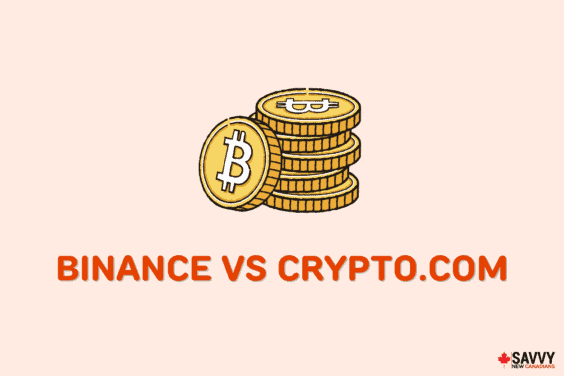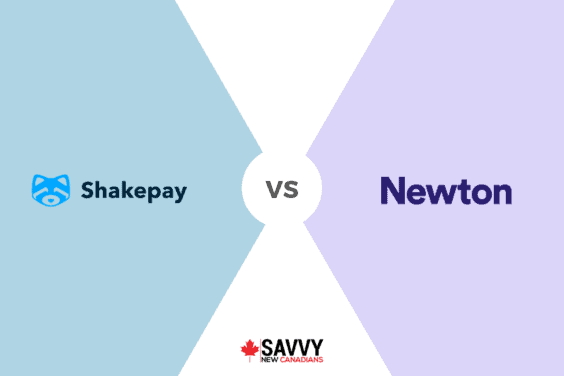When it comes to cryptocurrencies, Bitcoin is what first comes to mind. However, over the years, Ethereum has been following hard on its heels.
The Ethereum project was created in 2015, and in the last seven years, it has managed to become the second most influential currency globally.
As of March 2022, Ethereum occupies second place in the ranking of cryptocurrencies by market capitalization (~ $311 billion). In the last year alone, Ethereum’s price grew by almost 400%.
In this article, I provide an extensive overview of Ethereum, its history, goal, main features, as well as pros and cons.
What is Ethereum?
Ethereum can be defined as a decentralized computing platform. You can compare it to a regular laptop or PC, which requires multiple devices to function.
Like other cryptocurrencies, Ethereum is a decentralized network, meaning that the data is stored on all computers of the system and cannot be controlled by a single person or organization.
One of the primary purposes of the Ethereum network is to facilitate digital money transfers. However, the main thing that distinguishes Ethereum from other crypto projects is the ability to use it to launch other applications.
Due to its flexibility, Ethereum allows you to run many programs of varying complexity.
The History of Ethereum
To understand the basic concept of Ethereum, let’s first dive into the project’s history and its purpose.
Ethereum is a blockchain technology platform designed for facilitating a wide range of services.
If you were to compare Bitcoin with mail-hostings, Ethereum would be the Internet itself. The history of Ethereum begins with Vilalik Buterin, a Canadian programmer of Russian descent.
In 2011, he became one of the founders of the Bitcoin Magazin, the first publication about the crypto market and blockchain technologies.
Inspired by the capabilities of cryptocurrencies, he proposed the concept of a platform for creating decentralized applications.
However, Vitalik’s innovative ideas did not find substantial support from the community. As a result, he decided to launch his cryptocurrency.
In a few months, Vitalik formed a team and started developing his project. The company then organized an ICO, during which Ethereum received funding in the amount of 31,000 bitcoins.
The first version of Ethereum was introduced on July 30, 2015. At first glance, it wasn’t much different from Bitcoin’s network and its fundamental technology.
It was the same blockchain with coin mining and the ability to make transactions with low fees quickly. The Ethereum network also had miners responsible for adding new blocks and receiving a reward in return.
The new network could also be used as a means of payment during purchases, but it was far from its primary goal.
How Does Ethereum Work?
As already established, the main competitive advantage of Ethereum is smart contracts. Despite the name, it has nothing to do with IQ level.
A smart contract can be defined as a computer algorithm designed to conclude and maintain self-executing contracts in the blockchain environment.
Such contracts are written in the form of code that exists in a distributed ledger maintained and managed by a network of computers. In simple terms, smart contracts enable asset exchange without any middlemen.
Mass adoption of smart contracts following the Ethereum launch was a breakthrough for the crypto market.
Previously, creating a new cryptocurrency was very time-consuming and expensive since each coin needed its own open ledger. Creating a new blockchain requires a substantial team of developers and considerable funding.
Ethereum’s smart contract implementation allowed creating your decentralized application or cryptocurrency using the existing blockchain. In that regard, you could launch a new crypto project in a matter of several weeks.
Over the last five years, smart contracts became so popular that most of the existing cryptocurrencies were created on Ethereum. Those include such top coins as Tether (USDT) and Chainlink (LINK).
Ethereum vs Ethereum 2.0
In 2020, after two years of development, Vitalik Buterin announced that Ethereum would begin moving to Ethereum 2.0, a better and improved version of the project.
To understand what changes await Ethereum, let’s rewind and consider how cryptocurrency blockchain works.
Since it is a decentralized space, there is no single controlling organ or person. All network participants are equal and responsible for the correct functioning of the system.
From this perspective, they have to agree on all the decisions that influence the network. It is called consensus — each time a new transaction is initiated, all participants have to confirm its validity.
Ethereum: Proof-of-Work (PoW)
In this article on Bitcoin, I mentioned that miners are responsible for the validation of transactions. They add blocks to the chain and get a reward in return.
Such an approach is called the Proof-of-Work consensus algorithm. It was first introduced to the public in 1993 and completely changed the game.
Initially, the Ethereum network operated on the Proof-of-Work consensus. However, time passes and technologies get older. Over the years, developers have noticed severe problems that come with Proof-of-Work.
Below are the main ones:
Enormous energy consumption. To be the first one who solves the mathematical problem and adds a new block, many miners compete with each other, constantly performing complex calculations.
However, in reality, most of the work is wasted since only one miner gets the reward. An interesting fact: Bitcoins mining requires more electricity than countries such as Switzerland or Greece.
Fees. Users have to pay fees to miners to verify transactions. The more participants in the network, the more fees grow. For instance, in small transactions, the fee can actually be higher than the transfer amount itself.
Low speed and poor scalability. Speed is one of the main issues of the PoW blockchains. For example, the Bitcoin network can only process 7-10 transactions per second. With the continued growth of active crypto wallet users, such numbers just won’t do.
In order to prevent such problems from occurring in the Ethereum blockchain, Vitalik Buterin initiated the transition from Proof-of-Work to Proof-of-Stake consensus algorithm.
Ethereum 2.0: Proof-of-Stake (PoS)
Proof-of-Stake (PoS) is a consensus algorithm introduced on the Bitcointalk forum in 2011 as an alternative to PoW. Its main goal is to solve the main problems of PoW, including low speed and poor scalability of the network.
PoS requires no mining. Instead of solving mathematical problems, new coins are issued through staking.
It is a mechanism that allows adding new blocks by simply owning the network’s cryptocurrency. The participants of such a network are called validators, and their balance is called a stake.
The more coins a node has, the higher the chances of adding a new block and getting a reward.
Thus, you can compare staking to a bank deposit. The more coins are frozen, the higher the reward. For validators, it can become a new income source.
Nevertheless, staking is still technical. To become a validator, you must meet the requirements for a minimum number of coins. For example, in Ethereum 2.0 minimal stake is 32 ETH.
The main advantages of the PoS algorithm are:
- Low energy consumption compared to PoW.
- No special equipment is needed.
- High speed and scalability.
- Low fees.
- Participation in the project’s development. Validators should take part in voting on future upgrades and changes.
However, the Proof-of-Stake mechanism is not perfect either. Its primary disadvantage is the threat of centralization.
The validators with the most coins will ultimately control the network.
How to Buy Ethereum?
Similar to other popular cryptocurrencies, there are several ways to buy Ethereum coins. Some are suitable for beginners and take only a few clicks, while others require substantial crypto knowledge and skills.
I cover the most popular ways to purchase ETH in Canada below.
A. Cryptocurrency Exchange
A cryptocurrency exchange can be defined as a platform for trading and exchanging one digital currency for another or fiat currencies such as the Canadian dollar, US dollar, and euro.
Cryptocurrency exchanges can be compared to Forex. Each participant, investing real money, has the right to perform operations, sell and exchange Ethereum and other popular types of currencies for real money.
Crypto exchanges remain the primary type of crypto platform as they offer substantial benefits to the user.
Fiat support. Many modern platforms allow you to buy and sell cryptocurrencies for fiat money, including the Canadian and US dollar and euro.
Payment methods. A crypto exchange usually has various payment methods available. For instance, many platforms support Visa/Mastercard, Interac e-Transfers, SEPA, Wire transfer, etc.
User-friendly interface. The majority of modern cryptocurrency exchanges are targeted at beginners, providing a user-friendly interface and constant support. For example, it takes only several clicks to top up your account and buy ETH.
Variety of trading tools. Although crypto exchanges are usually convenient for beginners, they offer a full-featured interface as well. A crypto exchange is a viable option if you are a professional trader looking to buy and trade Ethereum.
Over-the-counter trading (OTC). An OTC broker facilitates transactions with large amounts of cryptocurrency and helps navigate the process for seller and buyer.
Some of the most popular and trusted cryptocurrency exchanges in Canada include:
B. Cryptocurrency Broker
A crypto broker acts as an intermediary and guarantor of a transaction between a seller and a buyer in the crypto market.
Brokers also provide clients with the basic tools for market analysis and investment portfolio management.
They are great for beginners as their clutter-free platforms make it easier to place trades even if you have no previous experience.
The most popular crypto brokers in Canada are:
C. P2P Platforms
Peer-to-peer (P2P) platforms result from an attempt to remove some of the restrictions that conventional crypto exchanges have.
Online exchanges have been the main tools for working with cryptocurrencies throughout the existence of Ethereum. However, such websites are managed by companies.
Consequently, they can control and influence all operations. Moreover, the team acts as arbitrators in case of disputes and charges a fee.
Seeing many shortcomings of such a system, some community members decided to transform the market by creating a new type of platform – a decentralized peer-to-peer system controlled by software, not people.
Here are several most popular P2P crypto platforms to choose from: Paxful and Local Bitcoins.
How to Store Ethereum?
After buying your ETH coins, a new question arises: how to safely and conveniently store Ethereum. The blockchain industry is not generally regulated, so you need to be especially careful about this issue.
Hot and cold crypto wallets
All cryptocurrency wallets can be divided into two main categories: hot and cold wallets.
A hot wallet describes storage connected to the Internet. Cold crypto wallets, on the contrary, are not connected to the web. Due to this, hot storage systems are usually considered less safe since they can be hacked.
Hot wallets include:
Online wallets. This is one of the easiest ways of storing Ethereum. However, it is not the safest option since the user entrusts their funds to a third-party service. Nevertheless, this disadvantage is partially offset by simplicity and convenience.
Traditional online wallets are easier to use but less secure. Hackers can steal funds by hacking into an account or by creating a phishing page. You need to be extra cautious and not store large amounts of cryptocurrency in an online wallet.
Blockchain.com and BitGo are some of the most popular online wallets.
Crypto exchanges. When you buy Ethereum on a cryptocurrency exchange, the platform automatically creates a wallet to store your coins. As such, exchanges are a viable option for beginners to store their ETH since they are easy to use. That said, they may also be open to hacking attempts.
Cold wallets are the safest option for storing crypto. They usually come in the form of a USB or flash drive not connected to the Internet. Due to the high level of security, cold wallets are often used by investors who hold large amounts of cryptocurrency.
The best cold wallets on the market are Ledger and Trezor.
Ethereum vs Bitcoin
Ethereum is often compared with Bitcoin since its popularity is growing in geometrical progression.
I have already described the main difference between the two projects: Ethereum is currently moving to the Proof-of-Stake consensus algorithm instead of Bitcoin’s Proof-of-Work.
Another difference is emission. Bitcoin’s emission is limited to 21 million coins. One day, the last coin will be mined. Thus, the value of the leading cryptocurrency will likely maintain a high level until then. However, what happens next is difficult to predict.
When it comes to Ethereum, coin emission is an ongoing, never-ending process. According to Vitalik Buterin, the project’s founder, the number of coins issued will correspond to the required amount for ensuring the network’s stability.
At the same time, the unlimited emission of Ethereum calls into question its value, as well as the stability of the exchange rate.
Ethereum vs Cardano
Another project Ethereum is often compared to is Cardano. This is primarily due to the fact that the latter also supports smart-contract technology.
Both Ethereum and Cardano blockchains can be used by developers to create decentralized applications and launch new crypto coins.
Since Ethereum will fully move to the PoS consensus algorithm by 2022-2023, ADA is currently more efficient. Cardano network ran on PoS mechanism from day one, requiring much less energy consumption and offering lower fees.
Emission also differs across these two projects. Ethereum, as I have previously stated, has an unlimited supply. Cardano’s emission, on the other hand, is limited. So far, there are 32 billion ADA in circulation, while 14 billion remain to be issued.
Ethereum Price History
The first records regarding the value of Ethereum date from August 2015. ETH was added to the Kraken crypto exchange in the first half of the month and was traded for $2.77.
During the following year, the ETH price increased to $10. Nevertheless, in 2016, the network has suffered the DAO attack, which resulted in a hard fork to return the stolen funds. This incident negatively impacted the project’s reputation and resulted in a rate drop.
The first serious price growth occurred in 2017 when Bitcoin’s rate skyrocketed to $20,000. Many investors started to recognize the potentials of cryptocurrency and, as a result, started buying Ethereum and other crypto coins besides BTC.
In 2018, the ETH price was subject to significant fluctuations. From the first day of the year, the Ethereum rate dramatically went up and reached its first significant all-time high — $1400.
However, due to a subsequent Bitcoin price correction, Ethereum’s rate dropped to $700. By the end of 2018, the coin’s price has fallen to $180.
From January to March 2019, Ethereum traded in the $160-$180 range. At the beginning of April, the bitcoin rate jumped by $1000. However, like most other top coins, Ethereum does not respond in a severe price spike.
Finally, in May 2019, during another wave of Bitcoin growth, the ETH price began a vigorous upward movement. As a result, the coin hit $280 in five days. At its growth peak that year, Ethereum’s price reached $280-300, but by the end of 2019, it fell back to $145.
2020 has become one of the most significant years for the project. Vitalik Buterin announced the transition of Ethereum to Proof-of-Stake as a part of upgrading to Ethereum 2.0. And, in December 2020, users were able to deposit their coins into the Ethereum 2.0 deposit contract.
Amid the update, Ethereum’s price rose by 460% in 2020. In January 2020, the ETH price was $130. In February, it grew to $290 but then began to decline along with BTC. In March, the coin rate fell below $90. After that, a new upward trend began, which led to Ethereum growing to $1200 by the end of 2020.
The upward trend continued in 2021. A new price record was achieved on May 12 when the Ethereum rate surpassed $4,300. This mark remains the coin’s historical all-time high. Moreover, the market capitalization of Ethereum set a new maximum as well. It amounted to $500 billion (20% of the total cryptocurrency market) for the first time.
Ethereum Price Predictions
Ethereum’s project has tremendous support from the crypto community. Analysts believe that the launch of Ethereum 2.0 will significantly improve the ecosystem. Based on this, the coin is expected to further grow in 2021.
Some experts have stated that the coin can reach $5,000 by the end of 2021 if the upward trend continues. Even bolder predictions involve Ethereum hitting $20,000 by the end of 2022.
Nevertheless, despite the positive outlook on the price’s future, the crypto market is highly volatile, and no one can accurately predict Ethereum’s movement.
Summing up
Over the six years on the crypto market, Ethereum has become the second most important and expensive coin. Its smart contract technology allows developers to launch their own crypto projects using the Ethereum blockchain.
The network is currently upgrading to Ethereum 2.0, which will make it cheaper and more efficient.
While ETH’s price may continue to grow, the reverse may also happen. Cryptocurrencies are a relatively new asset class and no one knows for sure what will happen in the long run.
Related:



